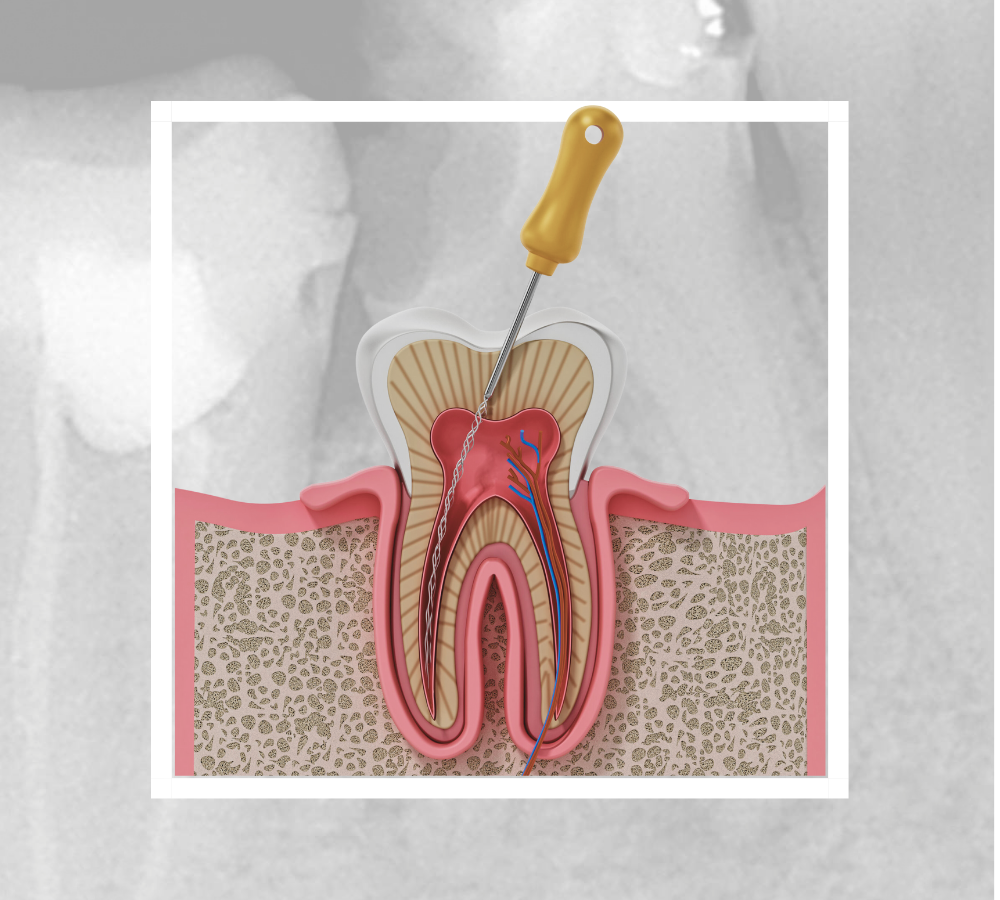
Root Canal Treatment
Root Canal Treatment

Endodontics (Root Treatment)
Root canal treatment is the cleaning, disinfection and filling of infected nerves in the canals of the tooth as a result of the loss of vitality of the nerves and veins in the tooth as a result of cracks and fractures in the teeth, caries in the tooth, wrong treatment processes, incorrect restorations.
Performing root canal treatment
With the initial anesthesia, you will not feel any pain.
The decay is cleaned or the broken part is removed and the nerves of the tooth are reached.
Nerves and tissues at the root of the tooth are cleaned
The root canal is shaped up to the root tip
Rvg (X-ray) is taken to determine the root canal length
Depending on the condition of the tooth, it can be treated in a single session or in treatments that last several sessions.
Dressing is done with drugs that will heal the root and root tip between sessions.
At the end of the root canal treatment, the canal is filled up to the root tip with special filling materials.
Things to consider during root canal treatment
Do not eat or drink anything until the effect of the anesthesia wears off.
During the treatment, nuts and similar hard foods and sticky foods such as chewing gum should be avoided in the area of the treated tooth. Most tooth fractures are seen between sessions.
Care should be taken that the temporary filling does not fall between treatment sessions.
Pain during and after root canal treatment
The patient does not feel any pain as anesthesia will be performed during root canal treatment. After the treatment, there may be a slight pain and sensitivity in the tooth, especially during chewing. It is okay to use a mild anti-inflammatory drug for a few days after treatment.
The necessity of removing the tooth as a result of inflammation in the tooth
Thanks to the materials and techniques used in root canal treatment today, the majority of root abscesses can be treated and thus the tooth does not need to be extracted.
Use of antibiotics in dental infections
Under normal conditions, there is no need to use antibiotics during root canal treatment. However, in the presence of advanced infection or in case of hypersensitivity in the tooth, antibiotics can be given.
Canal filling and filling
Root canal filling is the process of cleaning and filling the root canal. The filling process is the restoration of the crown part of the tooth visible in the mouth with composite filling, inlay, onlay or crown according to the amount of damage.
Fragility of teeth undergoing root canal treatment
As a result of root canal treatment, the tooth becomes more fragile as it loses its vitality. Veneer teeth should be preferred after treatment, as there is a lot of material loss in teeth undergoing root canal treatment and they become more fragile.
Root canal treatment renewal
The success rate of root canal treatments performed under sterile conditions is between 90-95%. If there is nerve tissue that is not cleaned during the treatment, in cases where the root canal filling and top filling is not done adequately, it is mentioned that the root canal treatment is unsuccessful due to the leakage of microorganisms into the canal and the formation of perforation or fractures during the treatment. We can understand a failed root canal treatment by the symptoms of toothache, spontaneous pain, swelling and redness at the root tip. Unsuccessful root canal treatment is renewed and the treatment is repeated. If this procedure is insufficient, apical resection is applied, the root tip is surgically reached, the infection is cleared and closed. If the root canal treatment is repeated and surgical intervention is insufficient, tooth extraction should be considered.
